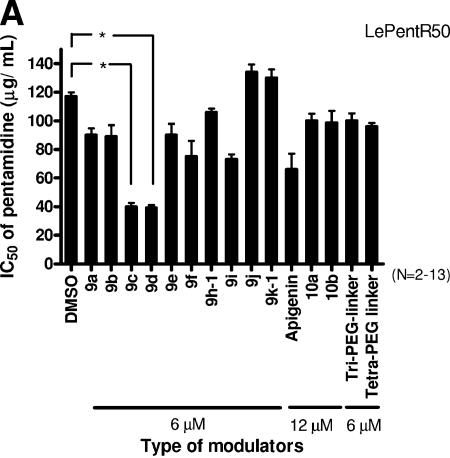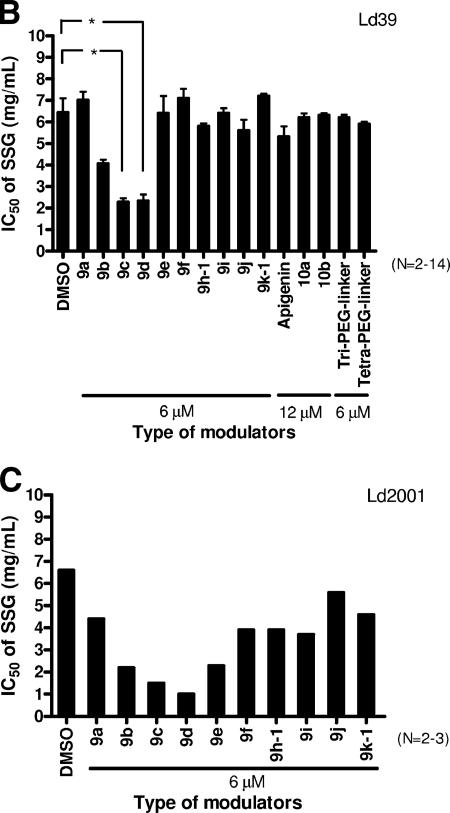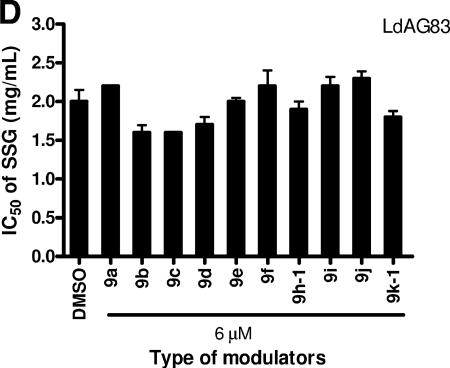FIG. 3.
Modulation of drug resistance by synthetic flavonoid dimers with different ethylene glycol lengths. The modulating activity of synthetic flavonoid dimers with different lengths of ethylene glycol units (from one to thirteen units) on the resistance of pentamidine-resistant L. enriettii LePentR50 (A), SSG resistance of SSG-resistant L. donovani Ld39 and Ld2001 (B and C), and wild-type L. donovani LdAG83 (D) was studied. The IC50 (that is, the concentration of pentamidine or SSG that can reduce the survival to 50% of the untreated control) was determined by MTS essay (mean ± standard error mean). Promastigotes were seeded at 105 cells per well and incubated at 27°C for 72 h with various concentrations of pentamidine or SSG in the presence of DMSO solvent control or various modulators. The modulators used included flavonoid dimers (9a to 9k-1), monomers (apigenin and apigenin with three or four ethylene glycol units added), and 10a and 10b (refer to Fig. 1 for structures). Tri-PEG-linker and Tetra-PEG-linker are linkers with three or four ethylene glycol units. The asterisk in panels A and B indicates that the differences between the IC50s of the DMSO control and 9c and 9d are statistically significant (Student t test; P < 0.01).



